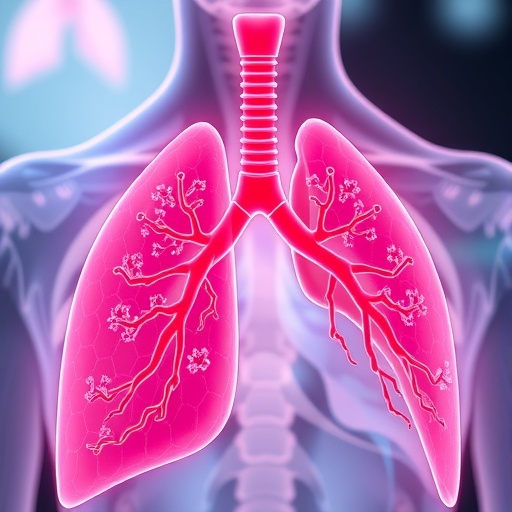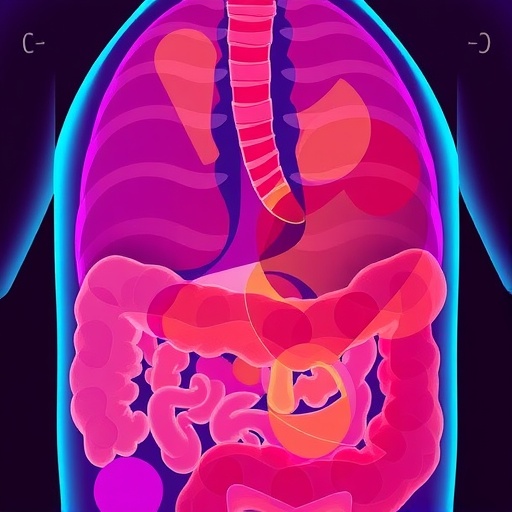Emerging research is shining a light on the crucial role of extracellular vesicle-derived long non-coding RNAs (lncRNAs) in the progression of hepatocellular carcinoma (HCC) associated with hepatitis B virus (HBV) infection. As liver diseases continue to impose a heavy global health burden, early detection remains a pressing challenge due to the scarcity of reliable, non-invasive biomarkers. In a groundbreaking study published in BMC Cancer, a team of researchers meticulously charted the landscape of EV-derived lncRNAs across varying stages of HBV-induced liver disease, revealing intricate molecular dynamics that could revolutionize early diagnosis and clinical management of HCC.
Liver cancer, particularly HCC, often emerges against a backdrop of chronic HBV infection and subsequent liver damage, including cirrhosis. Despite advances in medical imaging and serum biomarkers, catching HCC at an early, treatable stage has proved elusive. The promise of extracellular vesicles as carriers of disease-specific molecular signatures opens new frontiers. These nanometer-sized vesicles, secreted by cells into bodily fluids, encapsulate a rich cargo of RNAs, proteins, and lipids reflective of their cellular origin, thus serving as a “liquid biopsy” without the invasiveness of traditional tissue sampling.
In this comprehensive study, serum EVs were isolated from a cohort consisting of healthy controls, chronic hepatitis B (CHB) patients, liver cirrhosis patients, hepatocellular adenoma patients, and those diagnosed with HCC. The use of ultracentrifugation ensured high-purity vesicle isolation, while transmission electron microscopy, nanoparticle tracking analysis, and Western blotting confirmed the isolated EVs’ identity and purity. This rigorous validation underpins the credibility of subsequent molecular analyses.
High-throughput transcriptome sequencing was employed to profile RNA content within EVs from each clinical group, enabling systematic comparisons of lncRNA expression associated with disease progression. The study identified an array of 133 lncRNAs demonstrating significant differential expression specifically in the HCC group, underscoring their potential as biomarkers uniquely linked to malignant transformation in HBV-related liver disease.
The analytical framework extended beyond mere identification. Through multi-step screening and time-series analysis, the researchers pinpointed 10 core lncRNAs closely correlated with HCC progression. These lncRNAs exhibit dynamic expression changes aligning with clinical stages, suggesting their active involvement in the tumorigenic process rather than passive association. Such specificity is key to their potential deployment in diagnostic applications.
Diving deeper into molecular mechanisms, the authors constructed a complex lncRNA-miRNA-mRNA regulatory network encompassing 62 nodes and 68 interactions. This network sheds light on the layered post-transcriptional regulation and cross-talk among diverse RNA species. It highlights how lncRNAs may act as competing endogenous RNAs (ceRNAs), modulating miRNA availability and downstream mRNA expression, thereby influencing cellular pathways relevant to tumor growth and survival.
Functional enrichment analyses provided compelling hints about the biological processes modulated by these lncRNAs. The implicated pathways include critical aspects of cell proliferation regulation, transmembrane ion transport, cytosolic and plasma membrane localization, protein binding interactions, and vital signaling cascades such as autophagy and the mitogen-activated protein kinase (MAPK) pathway. These findings reveal the multifaceted impact of EV-derived lncRNAs on cellular homeostasis and oncogenic signaling networks.
Protein-protein interaction (PPI) network analysis further distilled the hub genes within this regulatory landscape, identifying 10 key genes including NTRK2 and KCNJ10. These hub genes likely serve as pivotal nodes mediating cross-talk within the signaling circuitry, rendering them potential targets for therapeutic intervention or biomarker validation.
To ensure robustness, the study validated the expression patterns of core lncRNAs and their downstream genes using an independent plasma cohort. The consistency observed across distinct patient populations strengthens the case for these molecules as reproducible biomarkers with clinical diagnostic value, potentially enabling real-time monitoring of disease progression via minimally invasive blood tests.
The implications of these findings are profound. By elucidating a set of HCC-specific lncRNA biomarkers packaged within extracellular vesicles, the study pioneers a paradigm enabling clinicians to leverage liquid biopsy techniques for early detection of liver cancer in high-risk HBV-infected individuals. Such breakthroughs promise to enhance prognosis by facilitating timely therapeutic interventions and personalized treatment strategies.
Moreover, the mechanistic insights into EV lncRNA-mediated regulatory networks enhance our understanding of tumor biology, possibly unveiling novel therapeutic avenues aimed at disrupting pathological signaling cascades in HCC. Targeting these EV-associated lncRNAs or their interacting partners could augment current treatment modalities and improve patient outcomes.
This research underscores the formidable potential of integrating advanced molecular profiling with cutting-edge bioinformatic analyses to decode the complexities of cancer progression. The marriage of transcriptomics, network biology, and clinical validation exemplifies a holistic approach that could be adapted to other malignancies where EV-derived molecules serve as biomarkers and mediators.
As the scientific community continues to grapple with liver cancer’s global toll, discoveries like these mark a critical stepping stone towards mitigating disease burden through early, precise, and non-invasive diagnosis. The promise of EV-derived lncRNAs heralds a new era where liquid biopsies transcend experimental status to become standard clinical tools.
Future research will likely explore how these EV-lncRNA signatures interact with the immune microenvironment, influence metastatic potential, and respond to therapeutic pressures. Longitudinal studies across larger cohorts will also be essential to verify clinical utility and refine biomarker panels for widespread screening initiatives.
In conclusion, this pioneering investigation charts a sophisticated molecular atlas of EV-derived lncRNAs linked to HBV-related HCC progression. It not only illuminates key biological pathways modulated during hepatocarcinogenesis but also lays the groundwork for transformative liquid biopsy-based diagnostic platforms. As such, it offers renewed hope for millions threatened by liver cancer worldwide.
Subject of Research: Characteristics and mechanistic roles of extracellular vesicle-derived long non-coding RNAs during HBV-related hepatocellular carcinoma progression.
Article Title: Characteristics of extracellular vesicle-derived lncRNAs during the progression of HBV-related hepatocellular carcinoma
Article References:
Ma, Y., Lou, C., liang, J. et al. Characteristics of extracellular vesicle-derived lncRNAs during the progression of HBV-related hepatocellular carcinoma. BMC Cancer 25, 1768 (2025). https://doi.org/10.1186/s12885-025-15237-y
Image Credits: Scienmag.com
DOI: 10.1186/s12885-025-15237-y (Published 14 November 2025)
Tags: cancer research BMC Cancerchronic hepatitis B infectionearly diagnosis of HCCextracellular vesicle lncRNAshepatitis B virus liver cancerhepatocellular carcinoma biomarkersliquid biopsy technologiesliver cancer progressionliver disease molecular dynamicsnon-invasive cancer detectionserum extracellular vesiclestherapeutic implications of lncRNAs





